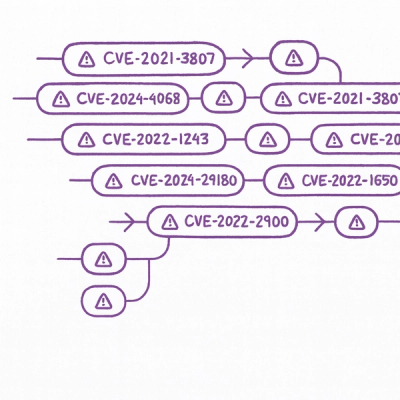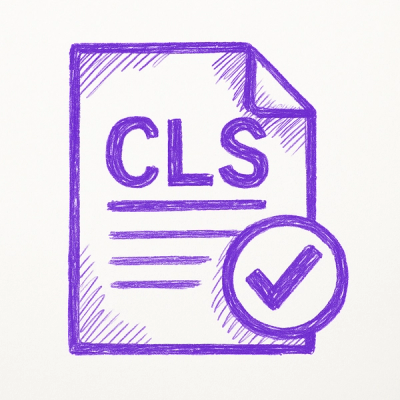
Security News
Astral Launches pyx: A Python-Native Package Registry
Astral unveils pyx, a Python-native package registry in beta, designed to speed installs, enhance security, and integrate deeply with uv.
Injectable is an opinionated and declarative Dependency Injection library for ruby.
It is being used in production (under ruby 2.5.1) in RubiconMD and was extracted from its codebase.
Add this line to your application's Gemfile:
gem 'injectable', '>= 1.0.0'
And then execute:
$ bundle
Or install it yourself as:
$ gem install injectable
The main motivation of Injectable is to ease compliance with SOLID's*, SRP* and Dependency Inversion principle by providing a declarative and very readable DSL* which avoids lots of bolierplate code and thus encourages good practices.*
*Sorry about the acronyms, but using an Ubiquitous Language is important.
Using Ruby on Rails recommended practices as an example, when your application grows enough you usually end up with huge model classes with too many responsibilities.
It's way better (although it requires effort and discipline) to split those models and extract domain logic into Service Objects ("SOs" from now on). You can do this without Injectable, but Injectable will make your SOs way more readable and a pleasure not only to write but also to test, while encouraging general good practices.
If you find occurences of SomeClass.any_instance.expects(:method) in your unit tests, then you are probably hardcoding dependencies:
test "MyClass#call"
Collaborator.any_instance.expects(:submit!) # hardcoded dependency
MyClass.new.call
end
class MyClass
attr_reader :collaborator
def initialize
@collaborator = Collaborator.new
end
def call
collaborator.submit!
end
end
What if you did this instead:
test "MyClass#call"
collaborator = stub('Collaborator')
collaborator.expects(:submit!)
MyClass.new(collaborator: collaborator).call
end
class MyClass
attr_reader :collaborator
def initialize(collaborator: Collaborator.new) # we will just provide a default
@collaborator = collaborator
end
def call
collaborator.submit!
end
end
The benefits are not only for testing, as now your class is more modular and you can swap collaborators as long as they have the proper interface, in this case they have to respond_to :submit!
Injectable allows you to write the above code like this:
class MyClass
include Injectable
dependency :collaborator
def call
collaborator.submit!
end
end
It might not seem a lot but:
Injectable is not only this, it has many more features. Please keep reading.Injectable is a mixin that you have to include in your class and it will provide several macros.
This is a real world example:
class PdfGenerator
include Injectable
dependency :wicked_pdf
argument :html
argument :render_footer, default: false
def call
wicked_pdf.pdf_from_string(html, options)
end
private
def options
return {} unless render_footer
{
footer: {
left: footer,
}
}
end
def footer
"Copyright ® #{Time.current.year}"
end
end
# And you would use it like this:
PdfGenerator.call(html: '<some html here>')
# Overriding the wicked_pdf dependency:
PdfGenerator.new(wicked_pdf: wicked_pdf_replacement).call(html: '<some html>')
In order to understand how (and why) Injectable works, you need to know some principles.
#call methodInjectable classes must define a public #call method that takes no arguments.
This is the only public method you will be defining in your Injectable classes.
# Correct ✅
def call
# do stuff
end
# Wrong ❗️
def call(some_argument)
# won't work and will raise an exception at runtime
end
If you want your #call method to receive arguments, that's what the #argument macro is for. BTW, we call those runtime arguments.
Why #call?
Because it's a ruby idiom. Many things in ruby are callable, like lambdas.
initialize methodInjectable classes take their dependencies as keyword arguments on the initialize method. They can also take configuration arguments on initialize:
MyClass.new(some_dep: some_dep_instance, some_config: true).call
Injectable instantiates dependencies that you have declared with the dependency macro for you and passes them to initialize, so if you don't want to override those you don't even need to instantiate the class and you can use the provided class method #call shortcut:
Myclass.call # This is calling `initialize` under the hood
If you need to override dependencies or configuration options, just call new yourself:
Myclass.new(some_dep: Override.new, some_config: false).call
If you do that, any dependency that you didn't pass will be injected by Injectable.
Notice that configuration arguments, which are declared with #initialize_with behave in the exact same way.
Both #initialize and #call take keyword arguments.
All Injectable macros define reader methods for you, that's why you define #call without arguments, because you access everything you declare via reader methods.
#dependency macroThis is the main reason why you want to use this library in the first place.
There are several ways of declaring a #dependency:
class ReportPdfRenderer
include Injectable
dependency :some_dependency
end
Injectable first tries to find the SomeDependency constant in ReportPdfRenderernamespace.::SomeDependency).Notice that this happens at runtime, not when defining your class.
class MyInjectable
include Injectable
dependency :client, class: Aws::S3::Client
dependency :parser, class: VeryLongClassNameForMyParser
end
Nothing fancy here, you are explicitly telling Injectable which class to instantiate for you.
You will want to use this style for example if the class is namespaced somewhere else or if you want a different name other than the class', like for example if it's too long.
Notice that this approach sets the class when ruby interprets the class, not at runtime.
dependency :complex_client do
instance = ThirdPartyLib.new(:foo, bar: 'goo')
instance.set_config(:name, 'value')
instance
end
It's important to understand that Injectable won't call #new on whatever you return from this block.
You probably want to use this when your dependency has a complex setup. We use it a lot when wrapping third party libraries which aren't reused elsewhere.
If you want to wrap a third party library and you need to reuse it, then we recommend that you write a specific Injectable class for it, so it adheres to its principles and is easier to use.
#dependency options:withIf the dependency takes arguments, you can set them with :with
# Arrays will be splatted: WithNormalArguments.new(1, 2, 3)
dependency :with_normal_arguments, with: [1, 2, 3]
# Hashes will be passed as-is: WithKeywordArguments.new(foo: 'bar)
dependency :with_keyword_arguments, with: { foo: 'bar' }
:depends_onIt allows you to share memoized instances of dependencies and supports both a single dependency or multiples as an Array:
dependency :client # this will be instantiated just once and will be shared
dependency :reporter, depends_on: :client
dependency :mailer, depends_on: %i[client reporter]
Dependencies of dependencies will be passed as keyword arguments using the same name they were declared with. In the example above, Injectable will instantiate a Mailer class passing { client: client, reporter: reporter } to #initialize.
If you have a dependency that is defined with a block which also depends_on other dependencies, you'll receive those as keyword arguments:
dependency :my_dependency, depends_on: :client do |client:|
MyDependency.new(client)
end
:callSometimes you have a class that doesn't adhere to Injectable principles:
dependency :renderer
def call
renderer.render # this class does not respond to `call`
end
:call is a way of wrapping such dependency so it behaves like an Injectable:
dependency :renderer, call: :render
def call
renderer.call
end
It's important to understand that you can mix and match all dependency configurations and options described above.
#initialize_with macroThis macro is meant for configuration arguments passed to initialize:
initialize_with :debug, default: false
If you don't pass the :default option the argument will be required.
#argument macro#argument allows you to define runtime arguments passed to #call
argument :browser, default: 'Unknown'
If you don't pass the :default option the argument will be required.
After checking out the repo, run bin/setup to install dependencies. Then, run rake spec to run the tests. You can also run bin/console for an interactive prompt that will allow you to experiment.
To install this gem onto your local machine, run bundle exec rake install. To release a new version, update the version number in version.rb, and then run bundle exec rake release, which will create a git tag for the version, push git commits and tags, and push the .gem file to rubygems.org.
Bug reports and pull requests are welcome on GitHub at https://github.com/rubiconmd/injectable. This project is intended to be a safe, welcoming space for collaboration, and contributors are expected to adhere to the Contributor Covenant code of conduct.
The gem is available as open source under the terms of the MIT License.
Everyone interacting in the Injectable project’s codebases, issue trackers, chat rooms and mailing lists is expected to follow the code of conduct.
initialize/call approach, did all code reviews and provided lots of insightful feedback and suggestions. He also wrote the inline documentation.FAQs
Unknown package
We found that maglev-injectable demonstrated a not healthy version release cadence and project activity because the last version was released a year ago. It has 5 open source maintainers collaborating on the project.
Did you know?

Socket for GitHub automatically highlights issues in each pull request and monitors the health of all your open source dependencies. Discover the contents of your packages and block harmful activity before you install or update your dependencies.

Security News
Astral unveils pyx, a Python-native package registry in beta, designed to speed installs, enhance security, and integrate deeply with uv.

Security News
The Latio podcast explores how static and runtime reachability help teams prioritize exploitable vulnerabilities and streamline AppSec workflows.

Security News
The latest Opengrep releases add Apex scanning, precision rule tuning, and performance gains for open source static code analysis.